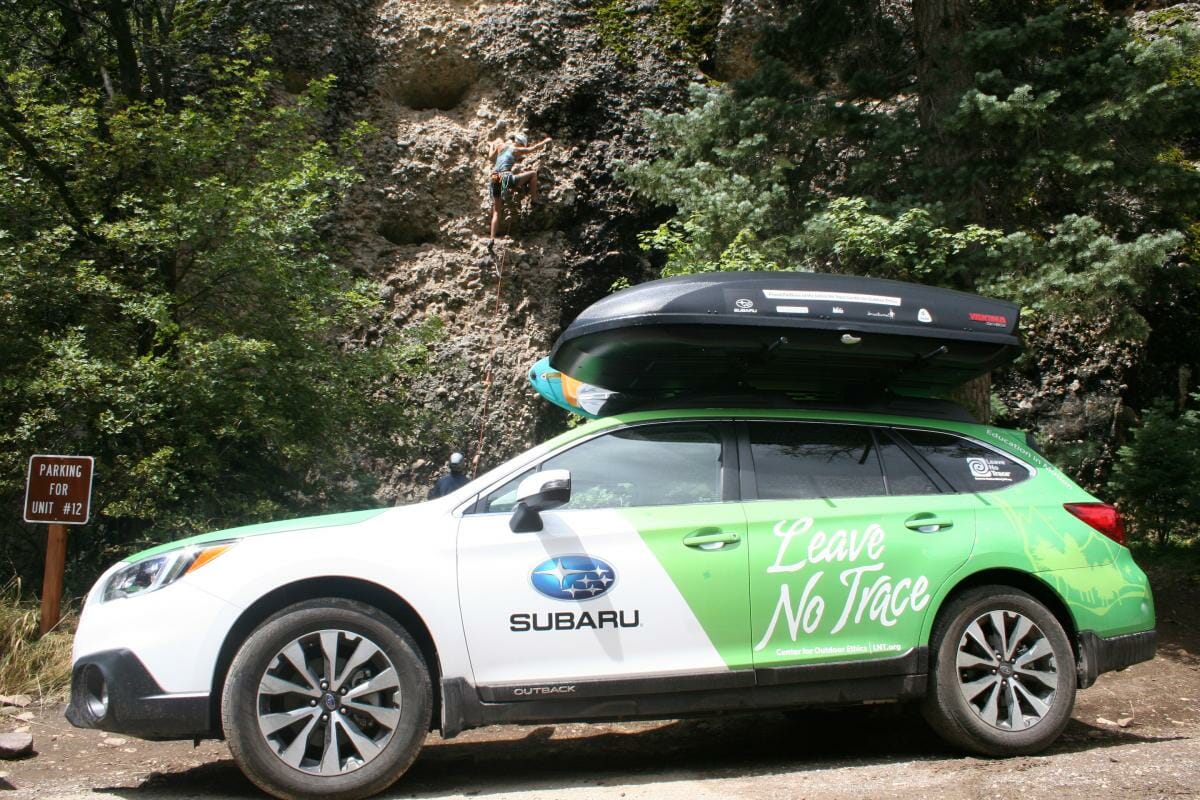News & Updates
Rock Climbing and Group Use


Maple Canyon, UT: Climbing is a popular sport in the US with over 9 million people participating in it each year, according to Climbing Magazine. With millions of people getting out to climb on public and private land, rock climbers can significantly degrade the areas that they love. Impacts at climbing areas range from braided trails around crags, litter, improper disposal of human and pet waste, disturbed raptor nests, and poor crag etiquette. Climbing in large groups can be more fun and safer, but also leads to a greater impact and more care should be taken to minimize impacts at the crags.
Use the following considerations on your next climbing day trip with a group.
· Plan Ahead and Prepare:
o Check with the local land management agency about group size limits, permits, and any rules or regulations.
o Avoid congested areas or visit them during less crowded times.
o Know the rules and regulations regarding fixed protection and learn the local ethics as well.
o Bring the appropriate equipment to both keep your group safe and minimize your impact.
· Travel and Camp on Durable Surfaces:
o Use established trails to access cliff lines and individual climbs.
o If established trails are not available, stick to durable surfaces (rock, gravel, sand, dry grass) when accessing routes off trails.
o Top rope off your own gear vs. directly through the fixed gear. By using your own gear you prevent the fixed gear from wearing down.
o When unpacking gear, use durable surface as your staging area for your group. Do not create a larger staging area by moving rocks or trampling vegetation.
· Dispose of Waste Properly:
o Pack it in, pack it out. Don’t leave behind any litter or food scraps, and keep an eye out for tape.
o Carry out abandoned gear and webbing.
o Check rules and regulations about human waste disposal. Pack out your human waste or dispose of it in a 6-8 inch cathole (4-6 in the desert). Pack out your toilet paper and hygiene products.
· Leave What you Find:
o Leave rock, plant, and other natural items where you find them.
o Avoid introducing or transporting non-native species.
o Do not build structures, furniture or dig trenches.
· Respect Wildlife:
o Learn about seasonal route closures and respect the rights of the birds nesting in that area.
o Always back off a climb if you might disturb wildlife.
o If you bring dogs to a crag keep them under control and don’t let them chase wildlife.
o Stay a safe distance from wildlife and avoid them during mating, nesting, if they are raising young, and winter.
o Never feed wildlife and secure your food or trash. Feeding wildlife damages their health and alters their natural behavior.
· Be Considerate of Other Visitors:
o Let nature’s sounds prevail. Avoid loud noises at the crag unless they are used for communicating between a belayer and climber.
o Do not monopolize a climb. Quickly get everyone in your group through a climb, then allow other visitors to use it.
o Do not block the trail near the crag with gear or ropes. Allow a safe and easy passageway for other visitors.

“Rock Climbing’s popularity is growing every year. As our numbers increase, we are at greater risk of losing access to hundreds of crags across the nation unless we take better care of the land. We must be more careful to protect the natural beauty that exists at our climbing areas. I support the principles of Leave No Trace and invite you to do the same. Working together, we can protect the integrity of public and private lands, and our access to climb there.”
-Lynn Hill
To find out how you can ensure access at your local climbing area get in contact with the climbing advocacy group, The Access Fund.
Thanks for reading and remember to be like the Center’s mascot Bigfoot and Leave No Trace.
Pat and TJ – Subaru/Leave No Trace Traveling Trainer West Central Team
Leave No Trace’s Patrick and Theresa Beezley are part of the 2015 Subaru/Leave No Trace Traveling Trainer Program that provides free, mobile education to communities across the country. Proud partners of this program include Subaru of America, Deuter, Hi-Cone, REI, Smartwool, The North Face, and Yakima.
References:
http://www.climbing.com/skill/first-national-study-to-examine-rock-climbing-related-injuries/
Let’s protect and enjoy our natural world together
Get the latest in Leave No Trace eNews in your inbox so you can stay informed and involved.
